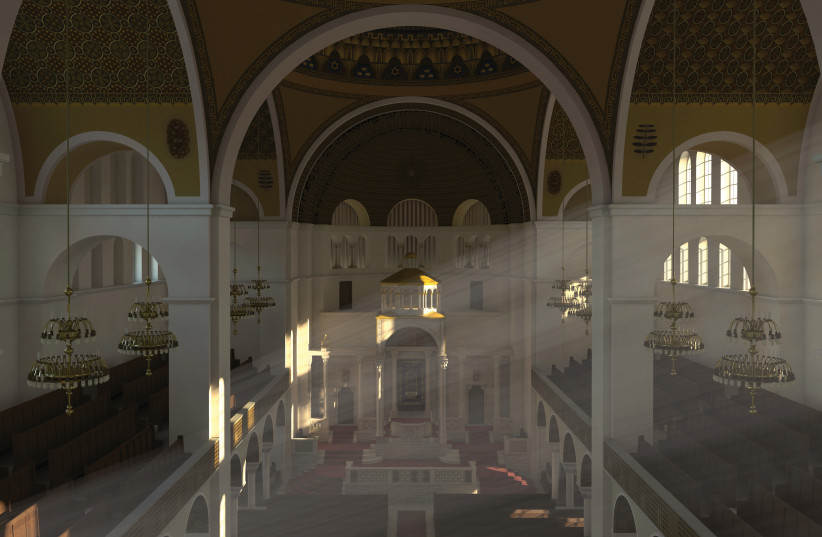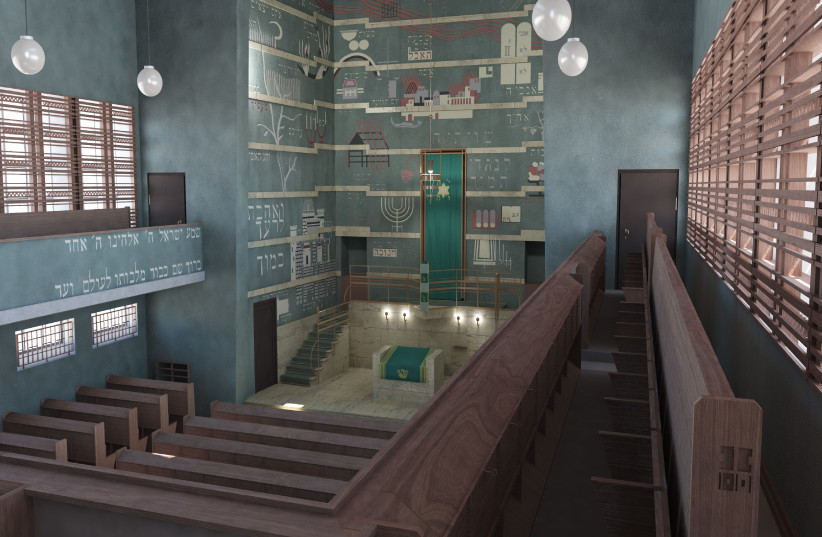To mark Kristallnacht this year, 18 synagogues which were destroyed during the prewar Nazi-era pogrom in Germany will be digitally recreated and projected onto present-day buildings on November 9.
Video will be projected on buildings and screens at their original sites at 13 locations across Germany, including Berlin, Hamburg, Munich, Frankfurt and beyond, on Tuesday night between 5 p.m. and 6 p.m., depending on location.
Another five projections will be staged in Austria.
The project, an initiative of the World Jewish Congress (WJC) with the support of the Central Council of Jews in Germany and the Federation of Austrian Jewish Communities, is designed to “shine a light on the richness and diversity of Jewish life in Germany” before the Holocaust.
The initiative in Germany is taking place under the patronage of its Federal Minister of Justice and Consumer Protection Christine Lambrecht, while in Austria the projections will be under the patronage of Federal Minister of Justice Alma Zadić and Federal Minister for the EU and Constitution Karoline Edtstadler.

The digital reconstructions were created by the Technical University Darmstadt and the Technical University of Vienna.
Kristallnacht was a series of riots and pogroms organized by the Nazis in Germany on November 9-10, 1938, in which 267 synagogues were destroyed, dozens if not hundreds of Jews were killed, thousands of Jewish businesses were vandalized and looted throughout Germany and Austria, and 30,000 Jewish men were arrested and sent to concentration camps.
“The Nazis infringed on the most sacred buildings that provided shelter and solidarity for people. The destruction of places of worship was an anticipation of the Holocaust,” said WJC president Ronald S. Lauder, upon announcement of the project.

“The intention of the perpetrators was very clear. The presence of Jews was supposed to vanish from the public sphere and thereby also be erased from collective memory. This history makes it more important today to make visible and perceptible what was lost in 1938,” he said.
“Within the last number of years, new synagogues have reopened again, bringing hope for a more peaceful future,” Lauder said. “I hope that this installation will make people interested in visiting a real synagogue and coming together in conversation with Jewish communities worldwide.”
